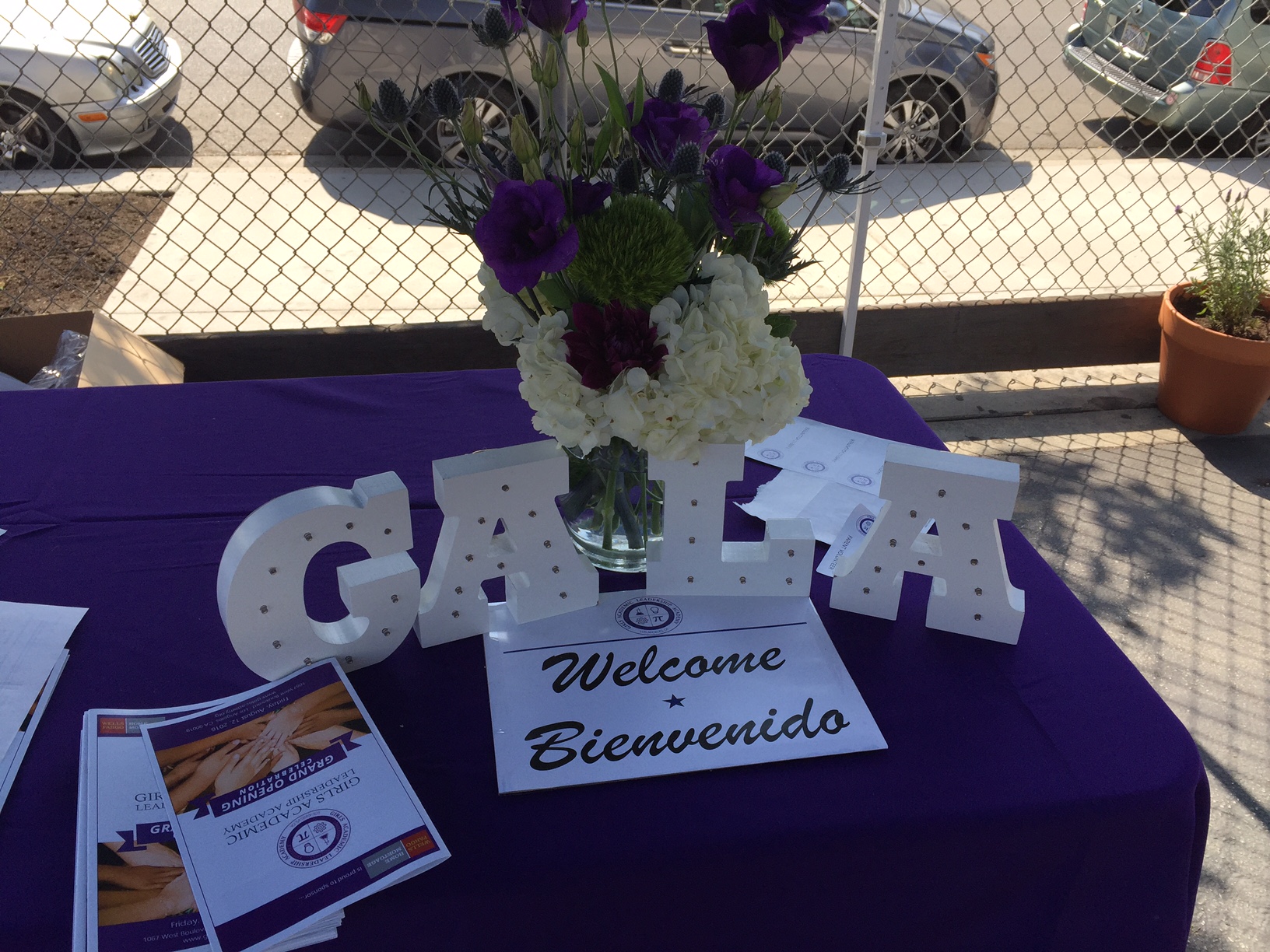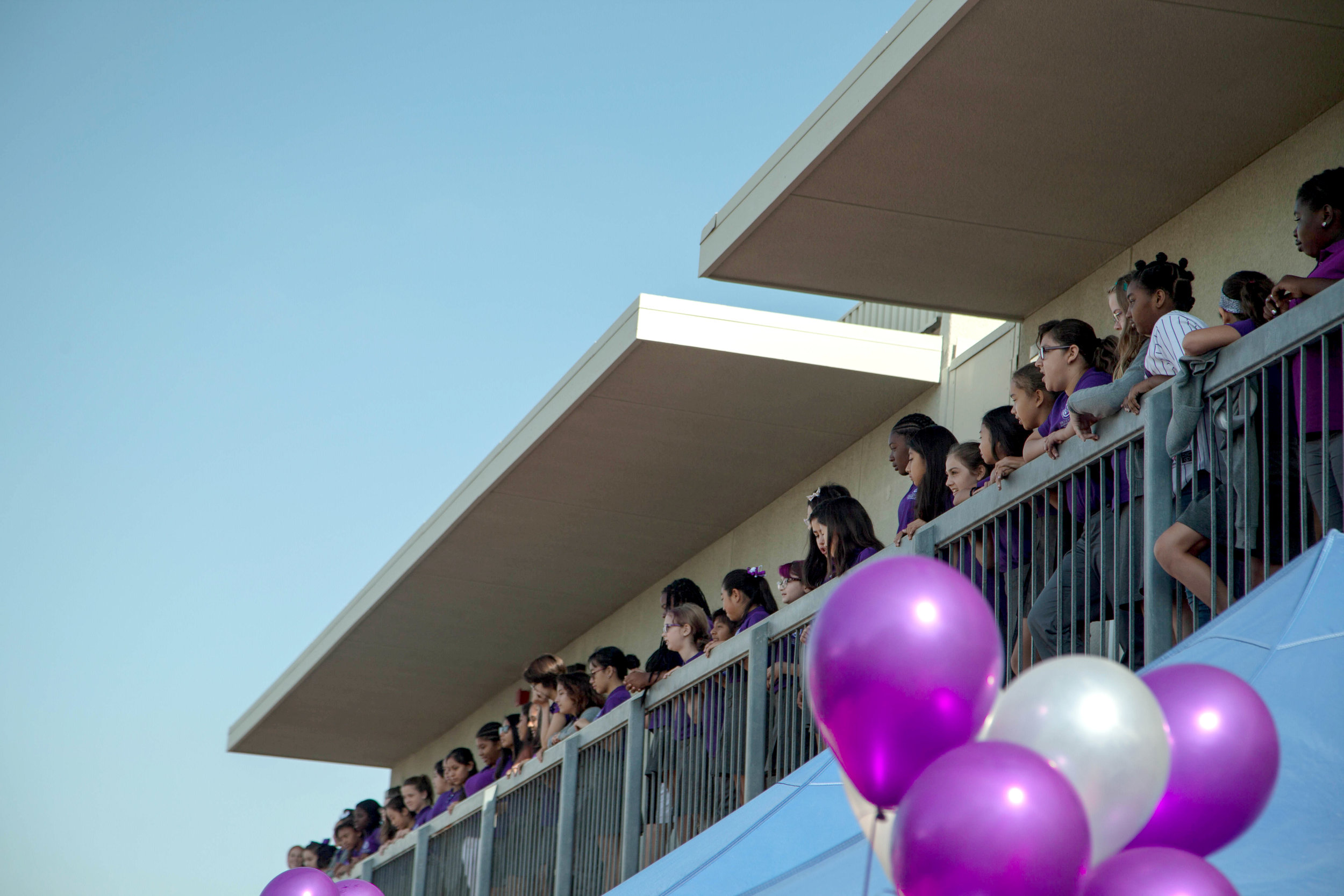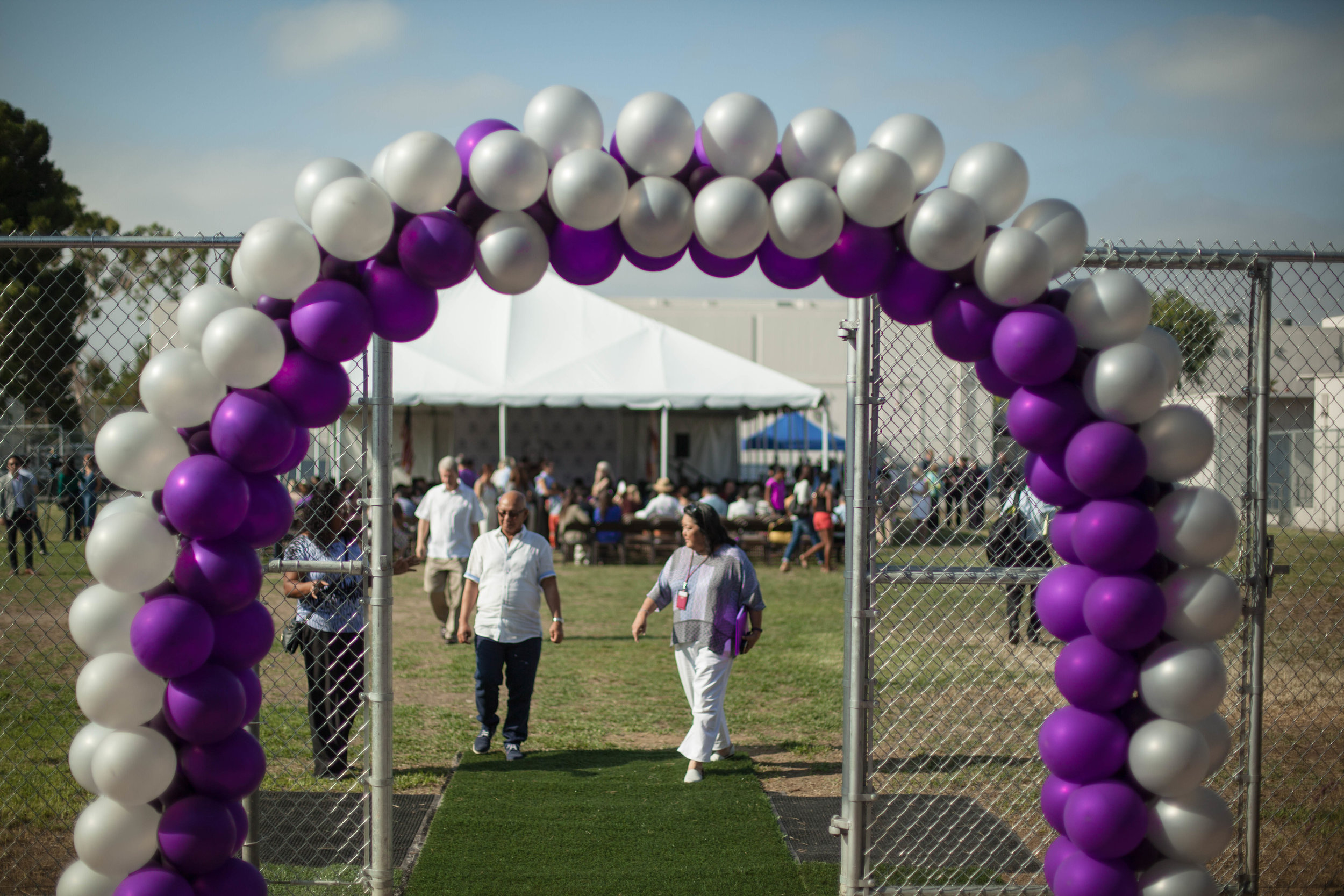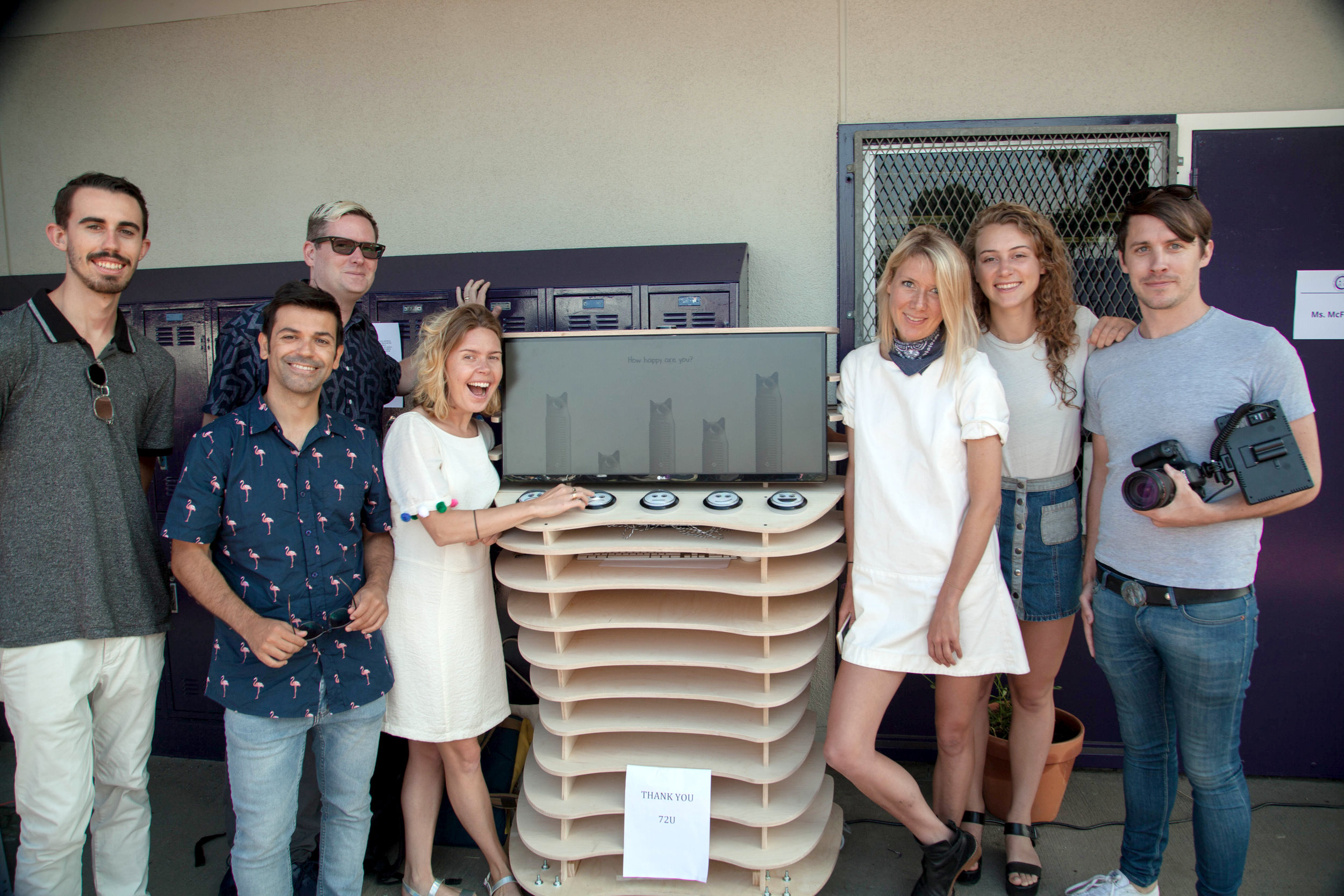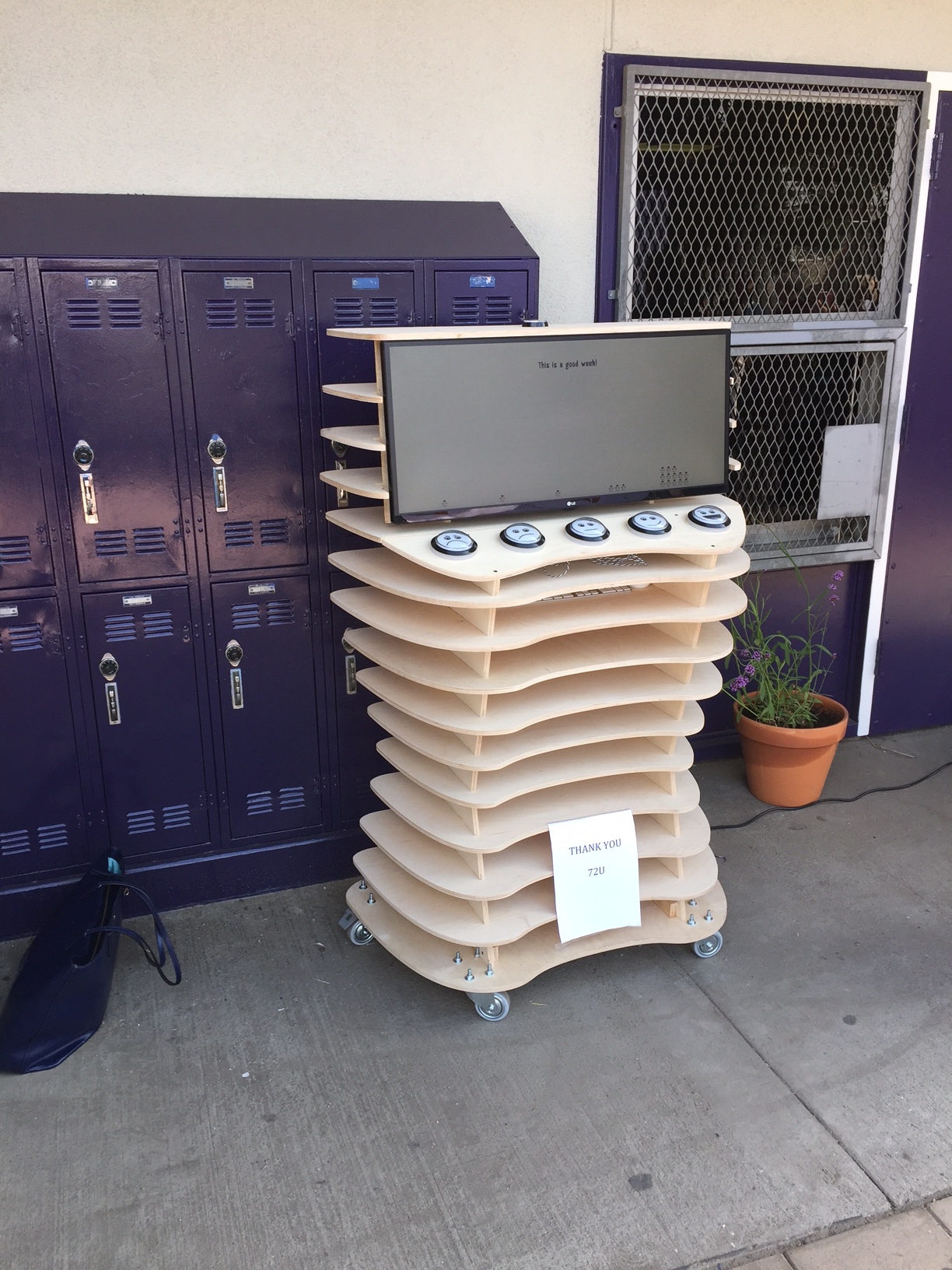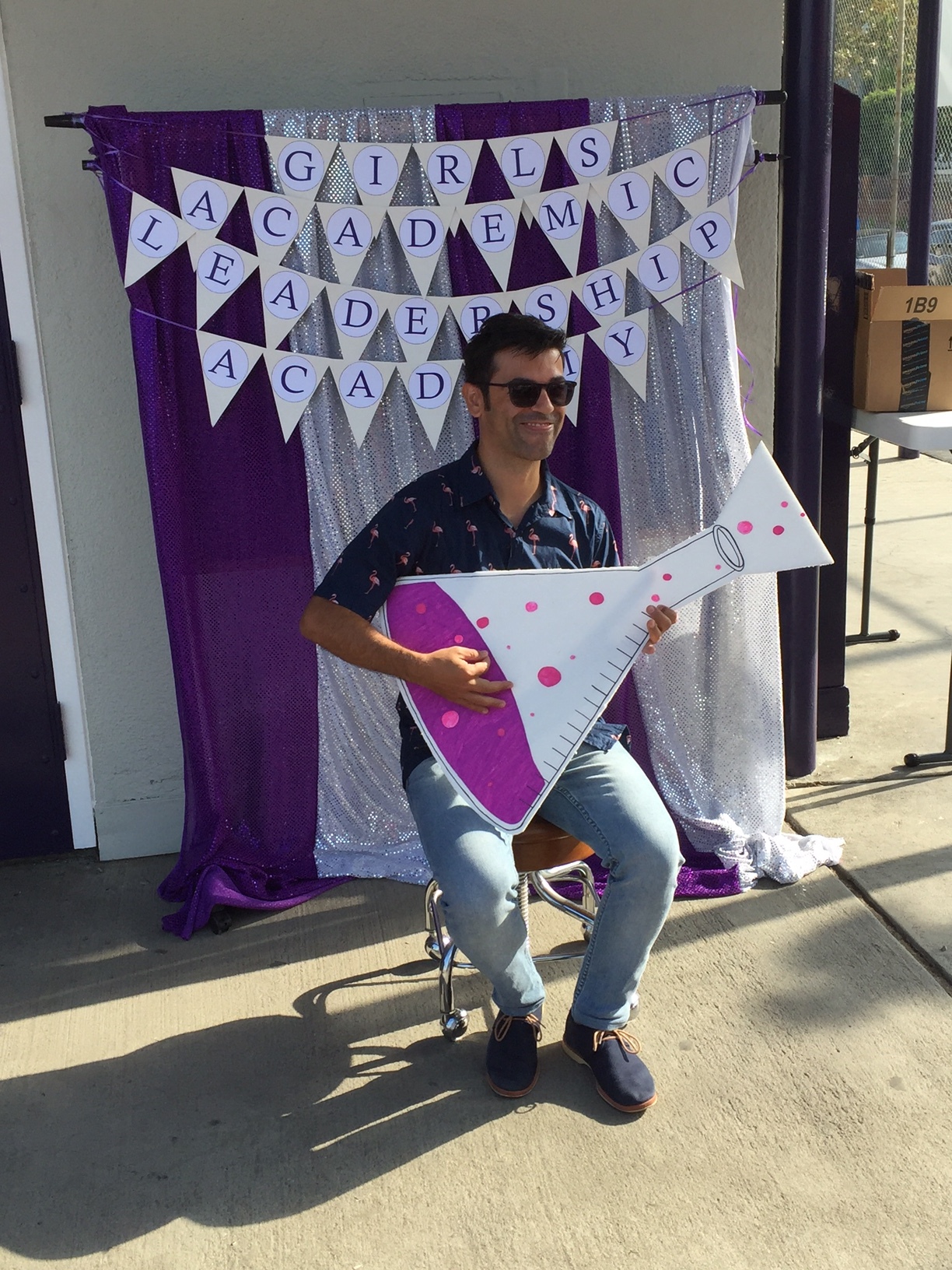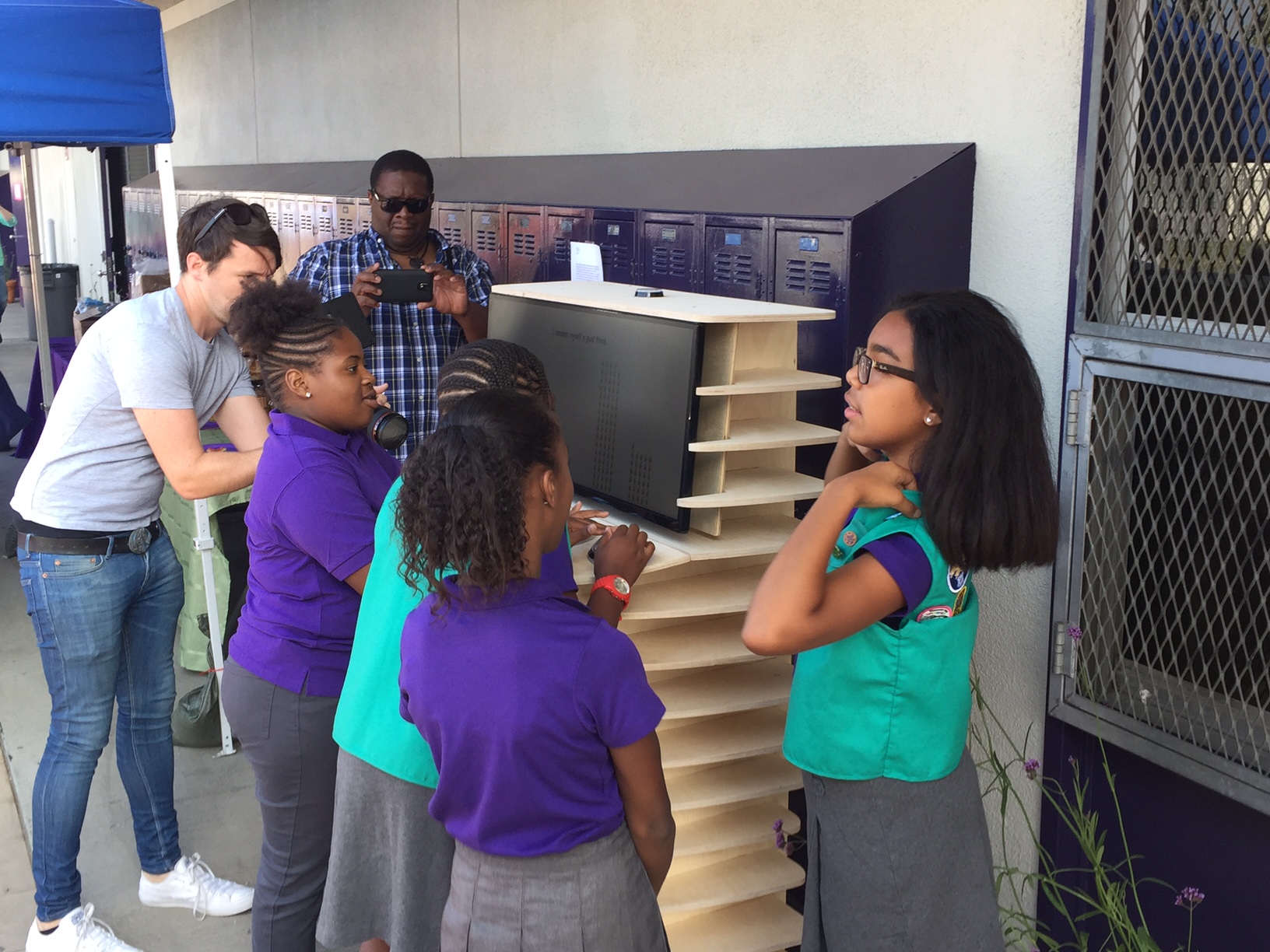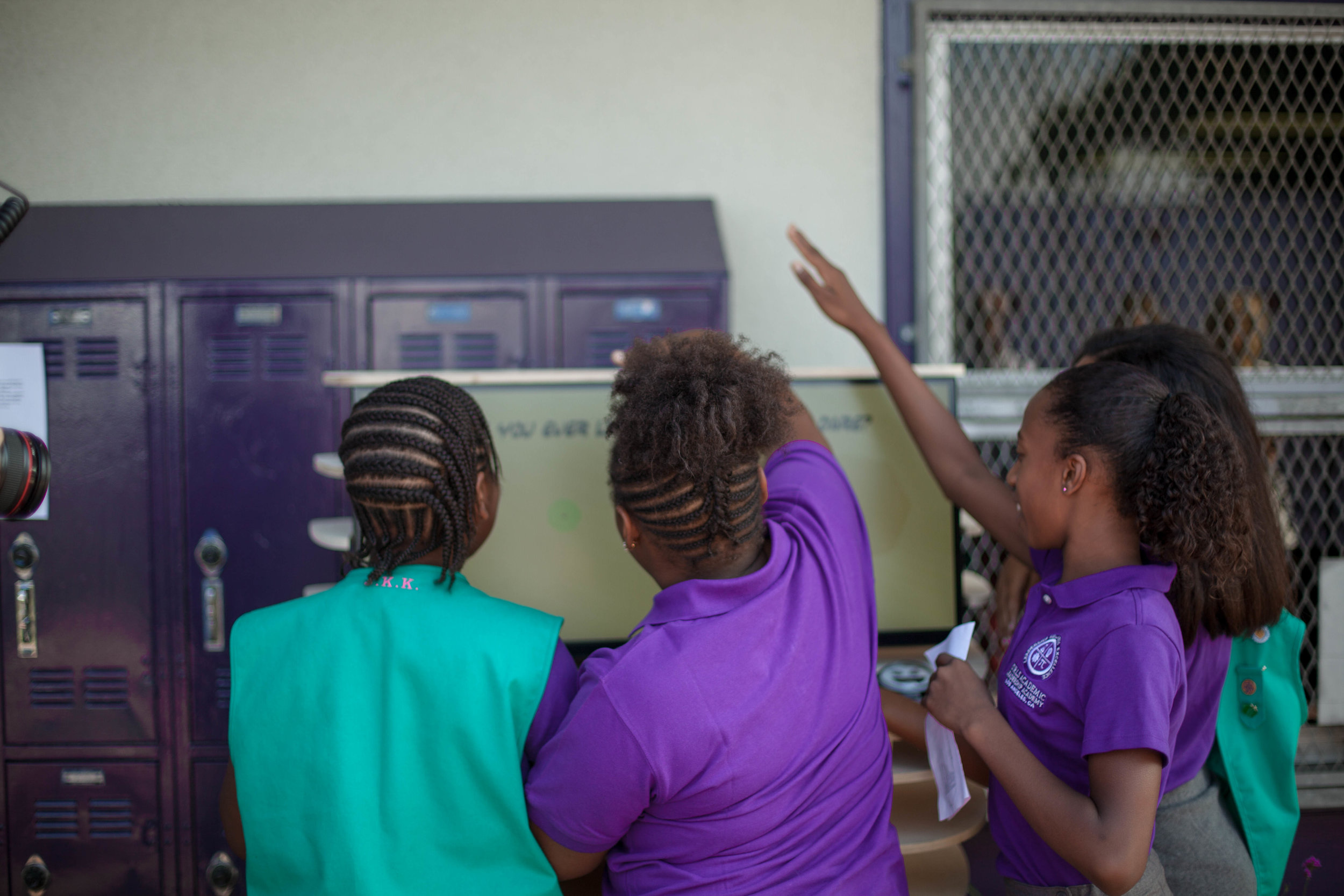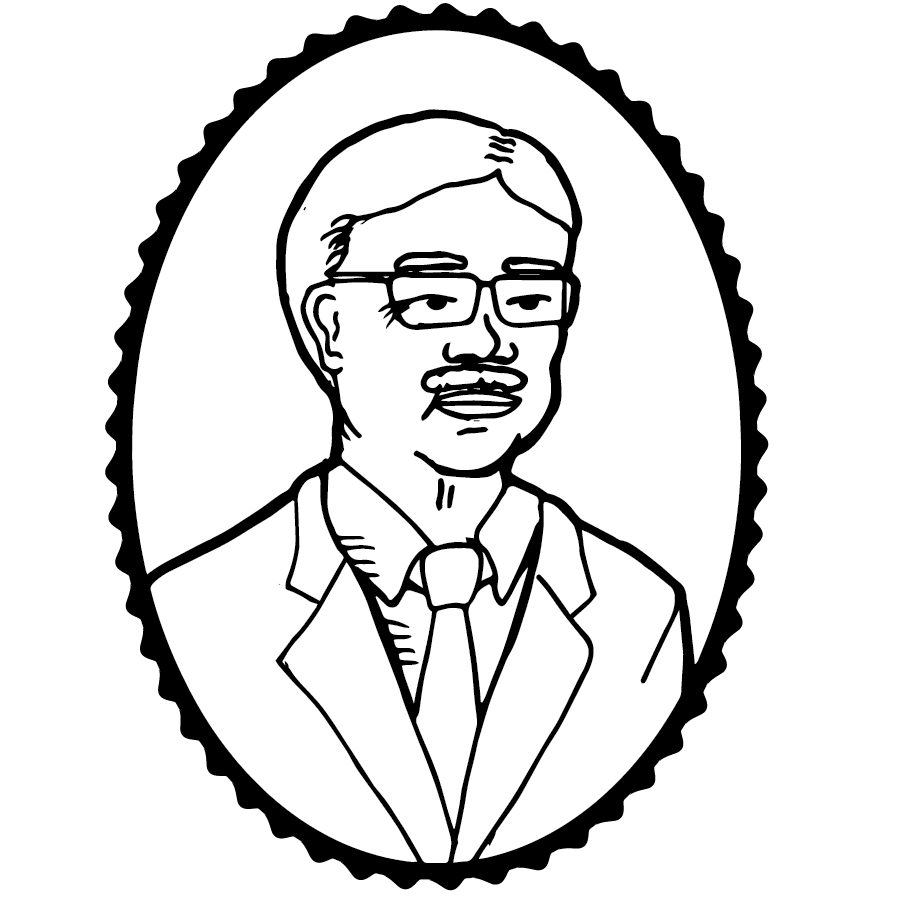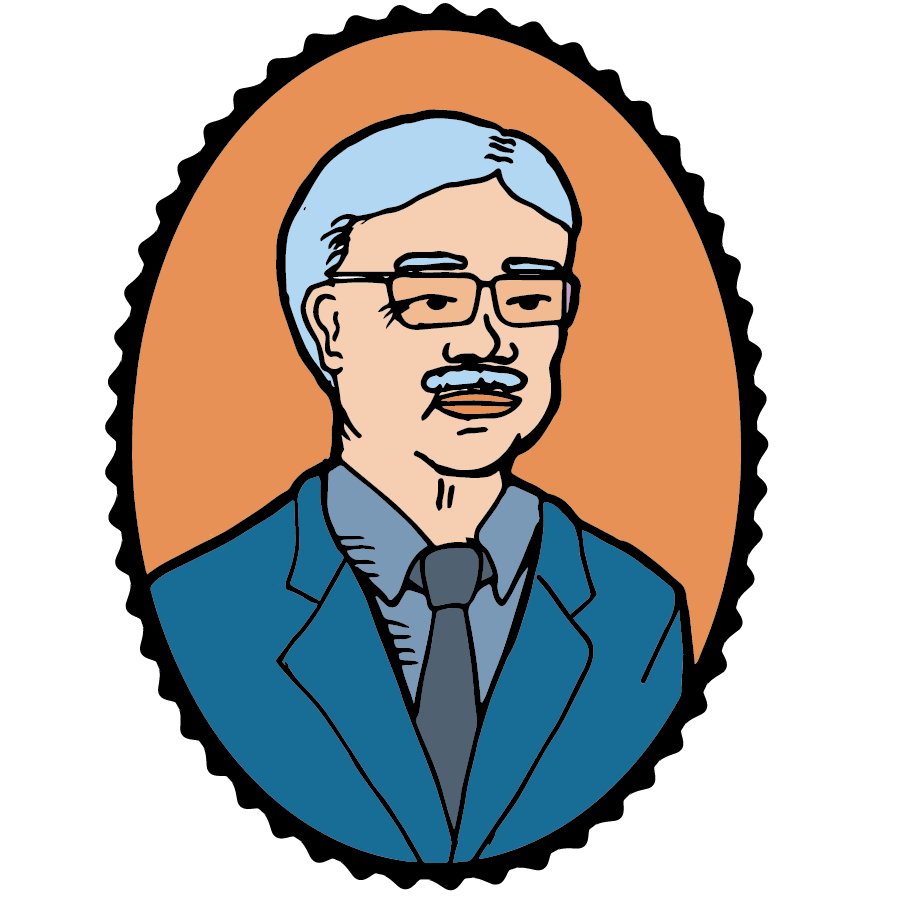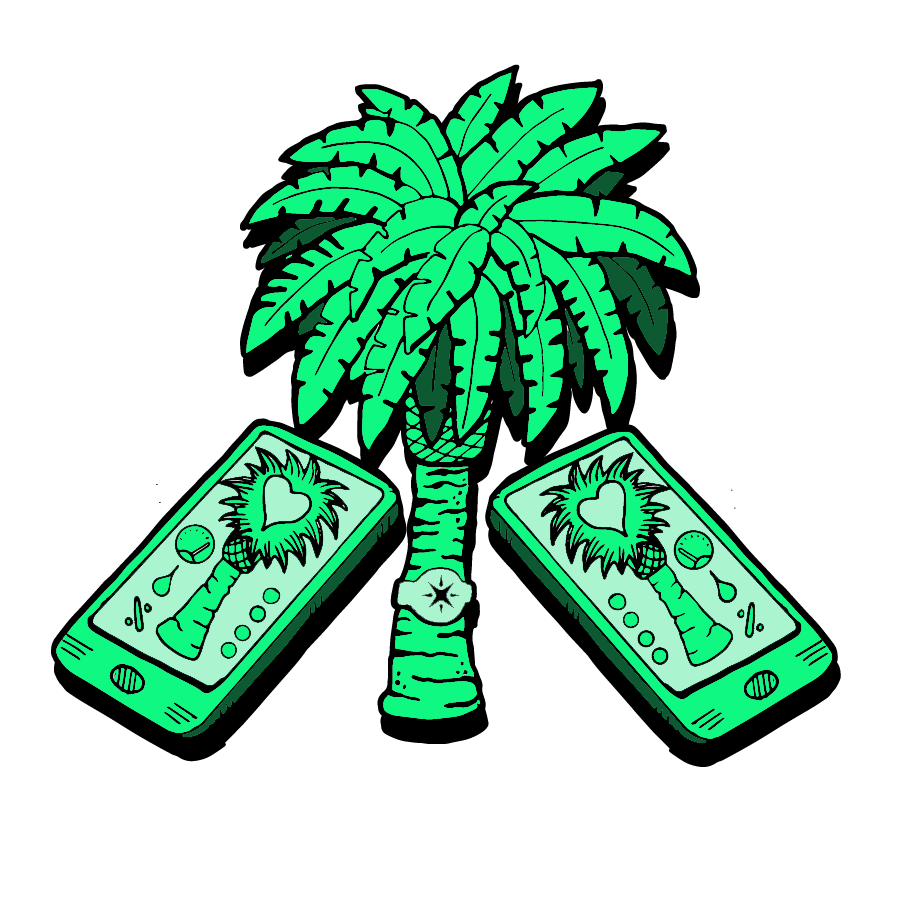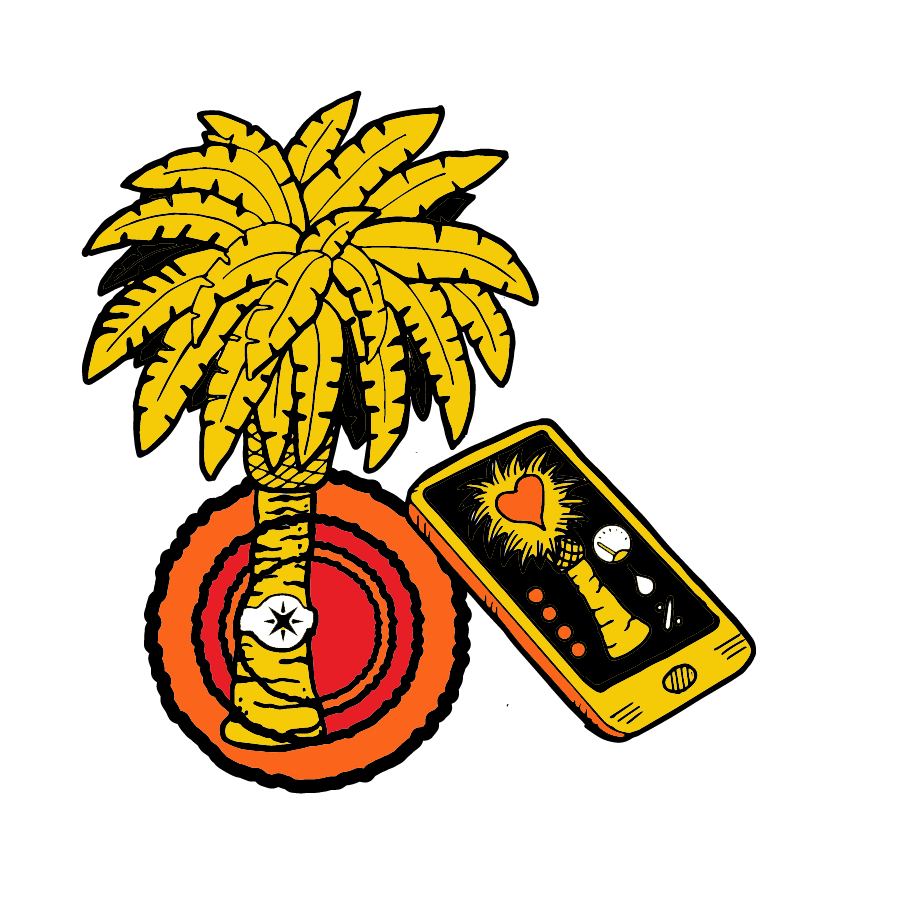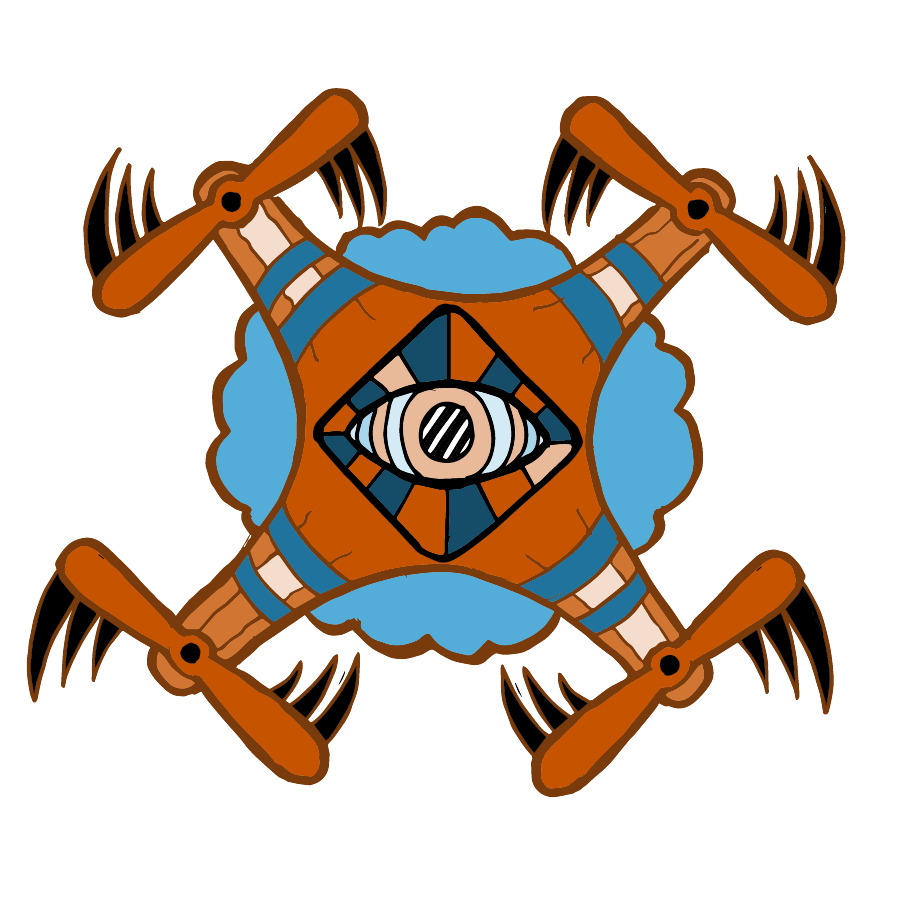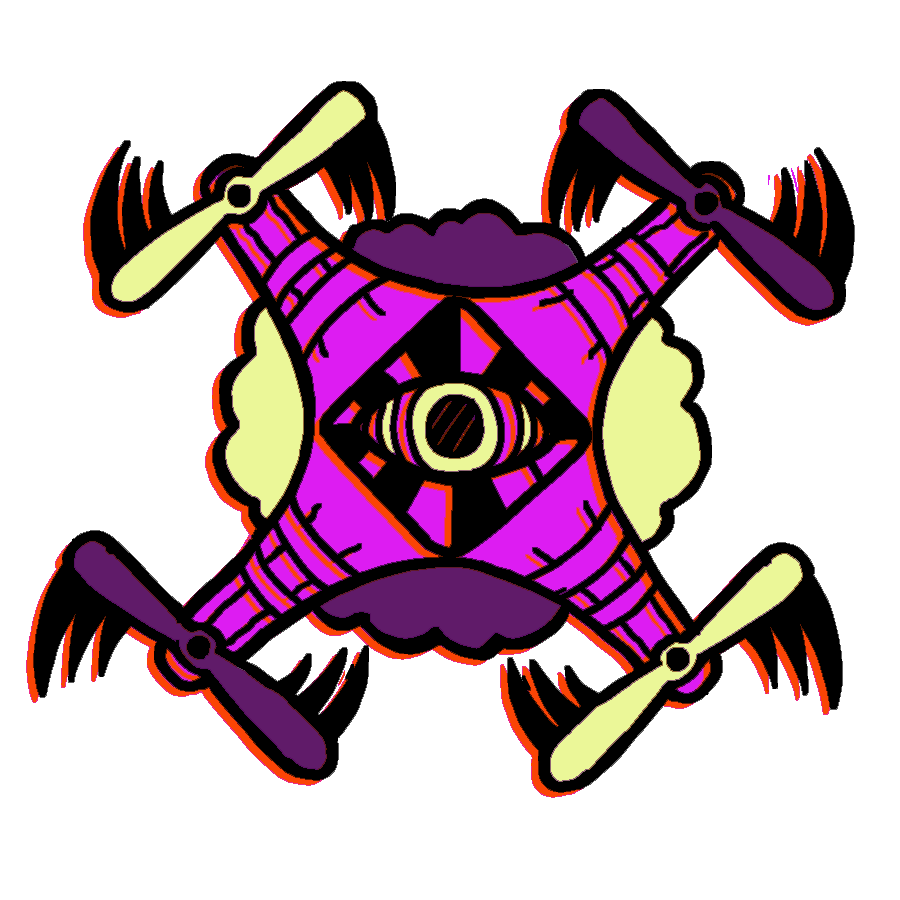This is one of the projects I worked on with the crew at 72u this summer. We made it open source: http://www.vizzyday.com/
GALA OPENS! .. AND SO DOES VIZZY
Friday August 12th marked the opening of the Girls Academic Leadership Academy in Los Angeles. It was also that day that 72U’s “Vizzy” daily visualization project went live! As expected, no student could vote just once; one set of girls in particular banged away at visualization after visualization. With each question, they were bubbling with opinions. Success!
Now: Can the school get the student body to vote just once per question?
The entire event was full of excitement and family turnout was great. The community put in tremendous work to beautifying the school which provided a lovely educational home for students, faculty and parents. A surprising amount of press crowded in as speeches and performances closed out the event. Hand over heart, we all participated in the pledge of allegiance. I haven’t done that for a REALLY long time. It was pretty powerful. 72U wishes GALA the best of luck toward an amazing first school year! Purple and White 4-ever.
We’re working on making this project open source. Look for more information and a dedicated website soon.
Upcoming Exhibition: Desired
72u : the First Half
I say this with positivity: 72u is kicking my ass. I definitely did not know what I was getting myself into. Each day has been filled with design reviews, presentations, guests and loads of collaboration. The team of us, seven in all, have all come from different disciplines: computer engineering, graphic design, and industrial design to name a few. If we can pull it all off, by the time the experience is over, we’ll have completed five different projects. At the halfway point, we’ve already completed two, and are part way through two others. The final, and most involved project has had a long ideation phase but we finally have a concept! Here’s a summary of what we’ve been working on:
A short film produced in one week (linked to in the blog post below).
Everyone on set.
Actors. Photo by Alex Schreer
A wearable electronic device - called LOCU - that tells you when you are in the ideal environmental conditions for creativity.
Alex's industrial design wizardry
Maria presents packaging ideas.
A commercial coffee campaign (the details of which I cannot share at this time).
A daily interactive data visualizer for a Girls Academic Leadership Academy (GALA).
Sample visualization
Kiosk concept drawings
A social installation based on the topic : Avocado as a symbol of democratized luxury.
Maria and Sara working on some test "food porn" sets.
72u film complete!
Between the guests, activities and projects, it's been a whirlwind first three weeks at 72u in Los Angeles. This video was our first project: A one minute film, produced in under one week, for under one thousand dollars. From casting to directing to scripting to editing to sound design, our group of seven seamlessly collaborated to represent the topic: Technology and Nature. Enjoy.
Special thanks to Ray Smiling for creative directing.
Prototype: new version of the sleepyBoard!
The sleepyBoard is an Arduino-ready prototyping board that makes it easy to build your own Arduino with a boot-loaded ATmega and a few other components. It is, however, not IC specific meaning you can use it to prototype many different circuits. It's also the perfect size for an Arduino shield (see details).
This is the 3rd version, which moves the IC area from the lower part of the PCB to the center. I primarily create these for classroom use but I also use them in my own work. If you're interested in purchasing some, let me know! I'll be manufacturing the first run later this summer and I'll have some for sale on this site after that. Detailed instructions will be included.
Roulade
I've been wanting to try out 3D printing in various metals so I designed this bracelet and printed it in polished grey steel.
A few of the exciting projects from the spring Device Invention class
It was a packed semester with students working on three distinctly different electronic projects. This year's Device Invention class started with the creation of a device that speaks, or is communicated with, wirelessly. Students were encouraged to think of wireless technology as a modern form of magic that allows an invisible stream of information pass short or long distances. Here are a few of the projects:
Max's Lunar Clock connects to a weather api to represent the current moon cycle.
Lois's Internet-controlled tea infuser. The steep time can be adjusted via a web app.
Kapp's martian weather monitor used NASA's mars rover API to get the current conditions.
Sydney and Leo made an internet connected mirror that gives you the time, weather, NYT top stories and upcoming muni buses.
Nichole's project uses an LED ring and the international space station API to indicate when the space station is within the latitude and longitude of the Bay Area.
The second project asked students to collect and visualize data. The goal was to think about what data could be collected and then presented in a way that tells a hidden story. What can we see in the data that we could not see before? Some examples:
Pauline, Kelby and Nichole's interactive visualization showing people entering the school over the course the day.
Isaac, Matt and Erik visualize current over time from different custom made batteries. Each of the three circles represents a different amount of weight placed on top of the aluminium-graphite batteries, as determined by the width of the circles' diameter. The lines that go outwards represent the current output over time. To read time, start from the the top and go clockwise just as if you were telling time on a standard analog clock.
Luca and Harrison visualize the temperature variation across neighborhoods.
The final short project was to design a portable solar device. The device could be a light, portable charger, or something else that can be run on 2 to 5 watts of solar generated energy. An couple examples:
Kelby's 2-watt portable solar battery pack with USB charging ability.
Ellie's 3.5-watt portable solar battery pack with USB charging ability.
What's the plan for the summer? .....Los Angeles and 72u.
I'm spending the summer in Los Angeles at 72u working on a yet-to-be-determined project(s) while learning to be a better designer and collaborator.
New Piece: Welcome Drone
I had the idea for this object two years ago when I first learned about the dronestre.am website by artist Josh Begley. I've iterated on various versions but this is the one that feels complete. Welcome Drone uses the internet of things methodology to bring the reality of secret drone strikes into the home and into casual conversation. Once an hour, a photon microcontroller checks to see if there are updates on the dronestre.am site. If there are, the unit glows for 8 hours continuously. Because there's nothing about the piece which indicates its meaning, it blends into the home like any other wall hanging artwork or decor. When it does unexpectedly light up it may serve as a reminder or conversation starter about the secret strikes that are taking place on a regular basis in Pakistan, Yemen and Somalia.
New Piece: SMS Cross stitch
I started a year ago and I finally finished it. A mash-up of wireless technology and craft aesthetics, this piece turns a text message into an instant display of digitally-sewn wisdom. It all runs from an openFrameworks sketch on the Raspberry Pi. Incoming SMSs are handled by the FONA module. See a demo here.
New Piece: "Remnant" - Digital Fab Lamp
This lamp was inspired by all the tree and bush stumps I see cut back but never fully excavated. The base is designed in Rhino and walnut cut on the CNC router. The circuit board, which uses an Arduino Pro Mini and an 24 RGB LED NeoPixel ring, was cut on the Othermill. The 3mm thick shade is designed in Rhino and printed through Shapeways. See a video of the lamp functioning.
Isaac: with custom milled circuit board, with LED frequency visualizer, and bluetooth
Great looking and sounding amplified speakers from this semester's Analog and Digital class
Max : bluetooth enabled
Erica: bluetooth enabled and with LED frequency visualizer
Kevin: bluetooth enabled and with LED frequency visualizer
Emily: bluetooth enabled
Sutter: bluetooth enabled
Courtney: bluetooth enabled
Ellie: with LED frequency visualizer
Chloe: with LED frequency visualizer
Nick: bluetooth enabled
These are just a few of the amazing amplifiers created this semester in the Lick-Wilmerding Analog and Digital class. If only the students would let me take a few home. They REALLY sound good.
Designs Available through Open Editions!
Want to wrap your gifts with Bay Area socio-political concerns and data visualization? Check out these designs now for sale through Open-Editions in San Francisco.
Sit Please Graphic Novel Event! Saturday Sept 19th 6pm in Oakland
On September 19th at 6 pm I will be sharing stories from my recent graphic novel: Sit Please @ the beautiful Vati Yoga Shala: 3032 Arizona Street, Oakland, CA. There will also be a short interactive drawing activity. http://www.extrasleepy.com/sitplease/
Event Flyer
Number Fog Design Installation and Fashion Show!
Here are some images from the August 26th Gray Area Creative Code Fellowship exhibition:
Outfits designed and sewn by Alice Clifford (left) and Timothy Ho (Right). Sam B. models Tim's creation
Fabric installation with demo video.
Sam B. models outfit design by Timothy Ho in front of fabric installation and demo video.
Joseph Burg models "$900 tent" suit. Sewing coordination by Mai Nguyen Hart.
Mel shows off "Mission Condo" dress in front of the condo that inspired the design.
Alice Clifford, Myself, Joseph Burg, Youssou Fall, and Mel. Alice Designed and made her outfit all other sewing in this image coordinated by Mai Nguyen Hart.
Lindsey Irving dons "wearable tech fist bump" wraparound as she catches up with Eric Rodenbeck of Stamen.
Matt Ganucheau and Rachel Weidinger show off outfits at the exhibition. Outfits created by Rachel.
This project was sponsored by Gray Area, Stamen Design, Britelite Immersive, Obscura Digital, and Presence Product Group.
Creative Code Fellowship Update: Week 9
This week's focus has been on the August 26th event. The following items are all in progress:
- One dress from the Mission Condo design is complete! (Thanks to the help of Mai Nguyen and her friend May).
- My long time friend Alice Clifford is making a dress from the Buses fabric to wear to the show.
- I have leads on a jacket and pants - from the $900 tent design - which I would wear to the show.
- I may have a lead on one or two men's button-up shirts. One would be from the Transport Unity design and one from the Wearable Tech design.
- I'm very excited to be working with CCA graduate student Timothy Ho. He's designed a complete outfit and has a model lined up for the show. He wants to create an outfit that highlights all the designs. One element of the outfit will use a patchwork design which is not an uncommon application of block-print fabrics. This is the patchwork configuration he will be working with:
- I am almost finished with the wood display rack (displayed in the previous post) and am working on a tag for each design that will give information on theme and and data.
- A website that has information about the designs is mostly compete.
What do I still have questions about?
I'm still unclear what the life of these fabrics should be moving forward. What kind of control, if any, should I maintain over their use and distribution? Should I open the designs up for anyone to purchase and do whatever they want? Or, should I try to partner with a local tailor to curate the items created? At this time, I'm leaning to the later but have not yet found the right person to work with.
Creative Code Fellowship: Week 8
I now have 8 printed designs with a 9th on the way! I'm backing off the design process for now.
This week has been about:
- Making connections to get things tailored
- Thinking about the installation for the Gray Area August 26th event
- Working on a website to inform interested parties about the ideas in each design
I have one dress in progress and a lead on a possible jacket / pants combo and men's button-up shirt. I'm also super excited that my friend Alice Clifford wants to make a dress and wear it to the event. I'm equally honored to be working the CCA fashion/textiles grad Timothy Ho. His designs are awesome and I'm dying to see what he'll do with some of the fabrics.
I created a design for a freestanding display that I'm thinking of building for the Gray Area event. I'll present it at the weekly review tomorrow and see what feedback I get:
I have an information website in progress. There's still a lot of work to do on it, but this is where it's living for now: http://numberfog.com/
Creative Code Fellowship Week 7: Almost ready for the Needle
I’ve been dialing in my Processing and openFrameworks pattern making tools. I’ve also been making some conceptual cuts in terms of how many themes I can use, mainly on the basis of which symbology is the strongest. These are designs that I will most likely print:
Clipper >>>>>>>Data represented at yellow arrows: Traffic volumes at regional (freeway) gateways >>>>>>data source
Mission Street Condo >>>>> Data, represented as inverted dot graph: Quarterly San Francisco Median Home Values 1990 - 2014 >>>>> data source
Street Vending / Coding Mash Up: HTML Frozen Treats >>>>> Data, represented as droplets from left to right : Quanity of people claiming food insecurity in the Bay Area 2001 -2013 data source + Data, represented as dot spiral : Mobile food vending permits issued in San Francisco >>>>> data source
Drone >>>>> Data, represented as stars: Close calls between pilots and drones reported, by state, to the FFA in 2014. California is the largest of the stars with 25 "close calls" reported. >>>>>> data source
$900 month Tent >>>>> Data, represented as magenta lines: San Jose Average monthly rent 2009-2015 >>>>> data source.
One of these is a maybe:
Car Services of San Francisco >>>>> Data represented as sine waves: Wage growth, by race/ethnicity, comparing 2000 to 2012. Every two lines, starting at the top, represents a race/ethnicity: White, Black, Latino, Asian/Pacific, Native American, Other. >>>>> data source
Car Services of San Francisco >>>>> Data represented as stars: Wage growth, by race/ethnicity, comparing 2000 to 2012. Every two start, starting at the left, represents a race/ethnicity: White, Black, Latino, Asian/Pacific, Native American, Other. >>>>> data source
I have finished fabrics coming of these 4 designs (3 yards each):
Buses of San Francisco >>>>>> Data, represented as circles from left to right : Gender and diversity data from 6 major Bay Area tech companies. Rightmost data: San Francisco ethnicity breakdown according to 2013 US census data >>>>>> data source
Street Vending / Coding Mash Up: CSS Tamales >>>>> Data, represented as polygons from left to right : Average Hourly wage for 22 San Francisco occupations as defined by the Bureau of Labor Statistics >>>>> data source
Wearable Tech Fist Bump/Battle >>>>>> Data, represented as hearts from left to right : California quarterly E-waste intake by private companies (in millions of pounds) from 2005 - 2015 >>>>>> data source
Internet of Things / Environmental Data Monitoring Palms >>>> Data represented as pink circles of lines: Numbers of recorded tree species in San Francisco. data source
I’m ready for the final phase, which is going under the needle to turn these fabrics into wearable items. I’m going to approach this using a few different resources (while still looking for more!). I’m still uncertain of the final display but I’m considering asking a number of people to wear the fabrics and maybe not actually having a designated exhibit location. This is, however, only the latest of a stream of changing ideas.
Creative Code Fellowship Week 6: The Printing has Begun!
After receiving my second set of test prints, I was able to identify some issues with my software and perform some fixes (mainly that I had an almost invisible border - exported around each image - that was showing exactly where the repeat was happening!) I’ve now printed on three different fabric types (Linen-cotton canvas, Organic cotton sateen, and Organic cotton knit), and have determined that the organic cotton sateen, for its color vibrancy and feel, will be the most appropriate fabrics for my first official prints.
Top: $900 wifi tent on linen-cotton canvas. >>>>>Data: San Jose average rent from July 2009 - May 2015
Bottom: Mission Street Condo on cotton sateen >>>>> Data: San Francisco average rent from July 2009 - May 2015
The self-driving car races the California high-speed train.>>>>>Data: Number of people commuting alone in a car to Santa Clara county.
> Progress on tools:
While waiting for the test prints to arrive, I worked out a number of new parametric layout options, this is the latest version of my Processing design tool:
In an attempt to harvest more computing power for increasingly heavy image and data manipulation, I started building a second software tool in openFrameworks. At this point, it's still rudimentary but it has an operational GUI, loads images + data, and exports PDFs.
I’ve expanded my data options as well as my symbology. Some of the newest images (which I may or may not use), include: San Francisco mayor Edward Lee, a Quadcopter, and Internet of Things Palm Tree.
> Finished designs:
Wearable Tech Fist Bump / Battle >>>>>>> Data, represented as hearts from left to right : California quarterly E-waste intake by private companies (in millions of pounds) from 2005 - 2015. data source
Internet of Things / Environmental Data Monitoring Palm >>>>>>>>> Data represented as pink circle of lines: Numbers of recorded tree species in San Francisco. data source
(Design for test print only) Mission Street Condo on cotton sateen >>>>> Data: San Francisco average rent from July 2009 - May 2015
> NOW CONSIDERing:
- I want to make the imagery look more “block-print-like.” Only a few of the images have the look I want; I need to keep working the others.
- I'm thinking about more varied ways to represent and compare data sets.
- I still don’t know what I’m going to do with the fabrics. Here are the top ideas:
- Work with local tailors to make 2 fairly standard men’s outfits (or at least shirts) and 2 dresses. Then display these items on mannequins or on live people. Potentially against a wallpapered backdrop (I did do a wallpaper test). There might also be a table with a cloth made of yet another design? I love the idea of mixing a variety of crazy clashing designs.
- Display the fabrics on their own.
- Work with a CCA fashion grad student (assuming he still wants to) and see what we come up with together which will inevitably be on the wilder side.


